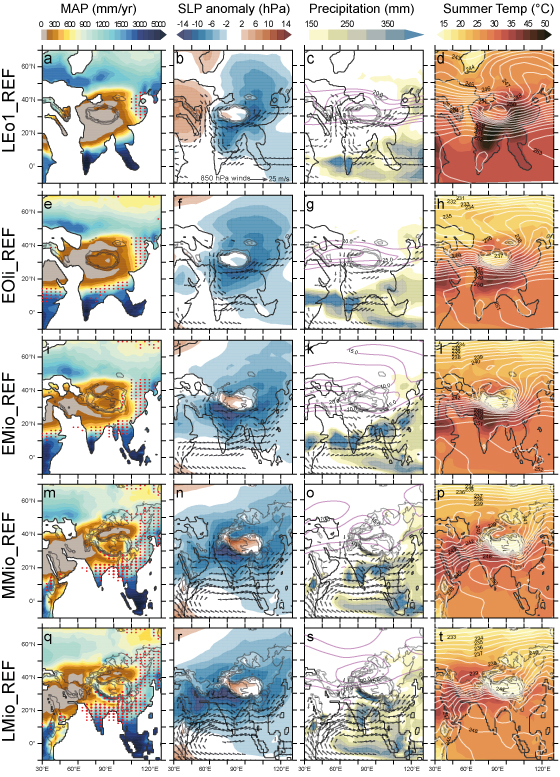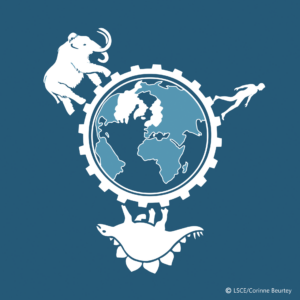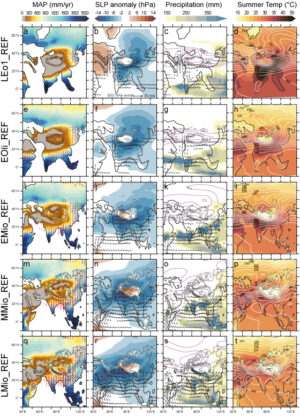by Delphine Tardif
The Asian monsoons are triggered by complex interactions between the atmosphere, Asian and African orography, and the surrounding oceans, resulting in highly seasonal climate and specific regional features. It was thought that the Asian monsoon was established during the Neogene, but recent evidence for monsoon-like precipitation seasonality occurring as early as the Paleogene greenhouse period challenges this paradigm. In this study, we first take advantage of the wealth of new studies to draw an up-to-date picture of Asian tectonic and paleoenvironmental evolution throughout the Cenozoic. We then analyse a set of 20 paleoclimate simulations spanning the late Eocene to latest Miocene (∼ 40–8 Ma) in order to better understand the evolution of the distinct Asian monsoon subsystems. At odds with the traditional view of a monsoonal evolution driven mainly by Himalayan-Tibetan uplift, our work emphasizes the importance of peripheral mountain ranges in driving the evolution of Asian climate.
Authors: D. Tardif, A.-C. Sarr, F. Fluteau, A. Licht, M. Kaya, J.-B. Ladant, N. Meijer, Y. Donnadieu, G. Dupont-Nivet, C.T. Bolton, G. Le Hir, Q. Pillot, F. Poblete, P. Sepulchre, A. Toumoulin, W. Banfield



